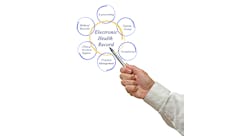Second generation CDS goes beyond the basics to become intuitive.
On a busy Friday night, a patient presented with shortness of breath in the emergency department (ED) at Boston’s Brigham and Women’s Hospital, where I serve as attending physician. After examining her, I immediately considered that she might have had a pulmonary embolus. I entered an order for a CT scan with intravenous contrast dye into the patient’s electronic health record (EHR), but received a notice from the clinical decision support (CDS) system that the patient also suffered from renal failure and might experience kidney damage as a result of the intravenous dye.
Second generation CDS goes beyond the basics to become intuitive.
On a busy Friday night, a patient presented with shortness of breath in the emergency department (ED) at Boston’s Brigham and Women’s Hospital, where I serve as attending physician. After examining her, I immediately considered that she might have had a pulmonary embolus. I entered an order for a CT scan with intravenous contrast dye into the patient’s electronic health record (EHR), but received a notice from the clinical decision support (CDS) system that the patient also suffered from renal failure and might experience kidney damage as a result of the intravenous dye.
Fortunately, the CDS system led me to information on how to use the drug Mucomyst to prevent this complication, and to an order set for correctly using Mucomyst. This second generation CDS system facilitated several important processes: It not only alerted me to a possible hazard, but also gave me information about what action I might take next, and helped me to execute that action.
CDS Evolution
Ask most IT professionals for a definition of CDS and they’re likely to talk about alerts or warnings related to drug allergies or drug-drug interactions. For example, a physician who prescribes cephalexin (an antibiotic) discovers that the patient has a documented allergy to cephalosporins. The CDS system explains the concern and gives the clinician the option of canceling or continuing the order. These early forms of CDS — basic, single-factor, reactive alerts — are still valuable in a variety of clinical situations, particularly as immediate checks for errors related to prescribing and ordering.
But new and emerging second-generation CDS goes far beyond alerts. It infers possible questions and needs before they are explicitly asked, and it combines reference information seamlessly with tools for taking action. It embraces order sets, guideline helpers, problem-based documentation templates, just-in-time flowsheets and data displays, and intelligent integrated reference information. Such interventions can help to contain costs, control medical errors, boost clinical productivity and improve quality.
Each of these interventions is distinguished by the property of workflow friendliness. A clinician might face a workday of 25 or more appointments stacked up at 10-minute intervals. Understandably, the clinician can use information only if it arrives quickly, doesn’t require special effort, and remains available when and where the clinician needs it. Second-generation CDS systems can help make delivering the best care also the most efficient option, by providing tailored, filtered information and action items directly on EHR screens where the clinician is already working. As such, it is much more likely to be used, and to have the desired impact.
CDS Innovation
Some of the most significant innovations in CDS belong to the category of referential or informational CDS. These features play a critical role in quality improvement and compliance programs. As healthcare IT professionals shop for EHRs and tools, they also need to shop for highly active CDS interventions with the potential to realize quality goals. Following are just some of the innovations IT professionals are likely to experience through second-generation CDS systems:
Varying Depth for Varying Needs: CDS programs offer a variety of tools, with varied functions, uses and timeframes. Some forms of CDS, such as infobuttons and short answers, take only seconds to access and use, while other forms, such as reference books and full-text journals, may occupy a clinician for days. CDS tools also vary in terms of function. Clinicians use infobuttons and short answers at the point of care, but tend to depend on quick references, order sets, procedure and radiology guides, summary references and handbooks and monographs as reference sources.
Support of the Workflow: All the answers a clinician wants are probably in a book or a journal, somewhere. But few clinicians have the time to scan through these original sources to find those answers. Newer interactive services not only provide information online, but are also transforming texts into neatly packaged answers to highly specific clinical questions. Studies show that a typical clinician only asks about 40-50 different questions in the course of a lifetime of clinical encounters (multiplied, of course, by the total number of patient conditions, medications and procedures). For my patient, the generic question was “What are the hazards of a particular procedure or treatment?” Advanced CDS content providers find and tag paragraphs and sections in traditional materials that address these questions clearly and succinctly, and make them available to interactive reference tools.
Infobuttons (or Knowledge-links): Once segmented answers are available, infobuttons make one or more relevant FAQs available right from the patient’s data screens in the EHR. For example, a clinician might scan a patient’s problem list within an EHR. Zeroing in on the problem of congestive heart failure (CHF), the infobuttons might offer information on several FAQ topics, such as epidemiology, diagnostic studies, therapy options, new reviews, and clinical guidelines. By clicking on the latter option, for example, the clinician can review the recently published guidelines on CHF.
Information Now and Later: Newer CDS systems serve up the most critical information first and then surround it with more general, supporting information. As a clinician, with an integrated multilevel reference, I can learn how to use Mucomyst right away, if I need it quickly; I can scan an expert review of different options and controversies in managing contrast-dye toxicity with one more click, and then I can study the original references later on, for my own education. Each of the upper levels can also lead to actionable tools such as order sets. Multilevel systems do a better job of providing the right level of information for a variety of different workflows. In addition, they make it possible, as with my patient, to facilitate an entire scenario of care, rather than just stopping a single-point error. Some of these tools also offer the chance to obtain and track CME credits.
Triggered Reference: Taking this one step further, CDS systems can assume that certain information needs exist, based on the clinical data that has already been entered, without any user request. Imagine that a clinician in office practice has diagnosed a patient with sinusitis, and orders both a complete blood count and a CT scan of the head. The diagnosis, test and procedure codes used in the EHR can kick off a targeted search of the CDS system’s reference library, and can offer to print or mail patient information handouts about sinusitis and CT scans.
Multimodal Reference: Newer generation CDS tools blend interactive text with animation, illustrations and video, particularly for imaging, anatomy and procedures. Sound, sight images and text combine to help the clinician learn a new procedure or review a procedure previously learned. Armed with the latest information and practical multimedia guidance, the clinician is able to approach a medical procedure with confidence.
Two-factor Questions: Most current electronic references can help with a single question: “What medications are recommended for congestive heart failure,” but clinicians usually know the basic answers. Many questions that really make a clinician seek reference help are two-factor questions: “What medications are recommended for congestive heart failure in a diabetic patient?” Or, in my case, “What is the best test for pulmonary embolus in a patient with renal failure?” Such questions come up with surprising frequency in the course of clinical workflow. Up-and-coming CDS tools overcome these limitations by answering both specific and two-factor questions and increasing the precision of information available to the clinician.
Patient Access: CDS is also relevant to patients who will increasingly demand answers to highly specific medical questions. Instead of having to perform a highly generalized medical search, future patients will be prompted to type in a word or phrase representing a medical condition, a medication, a procedure or therapy, or complete questions. As it does for the clinician, preconfigured question forms make it much easier to provide the patient with highly specific answers to specific questions.
CDS Homework
The right CDS can make a significant quality, efficiency and financial difference for healthcare organizations. Before investing in an EHR or other healthcare IT application, it pays for your organization to consider its own clinical environment, range of services and quality targets. This will lead to a list of top-priority CDS needs. Then, you can carefully research the nature, quality and performance of the available CDS features in the candidate healthcare IT systems, and how well they address those needs. Armed with a greater awareness of new CDS techniques and their capabilities, you will be better positioned to purchase and deploy a system that will facilitate superior care for years to come.




